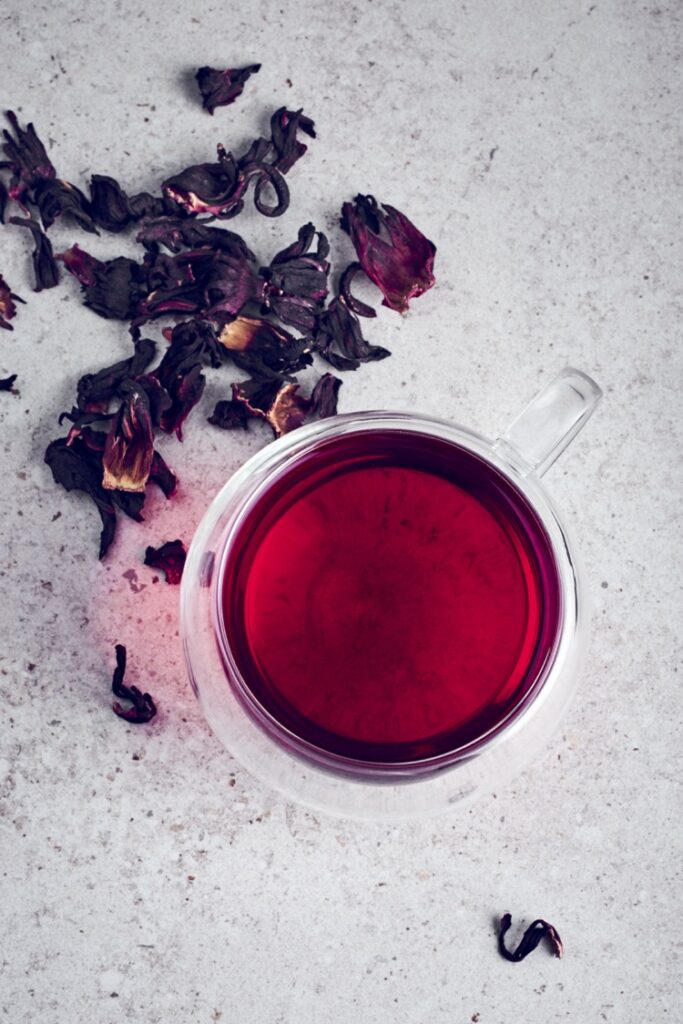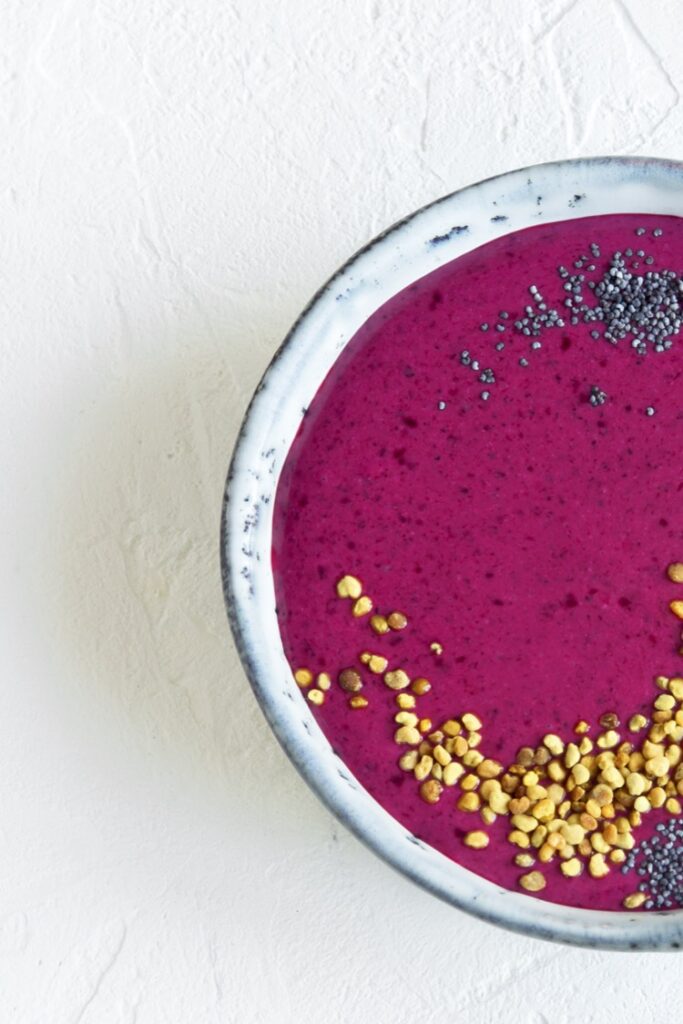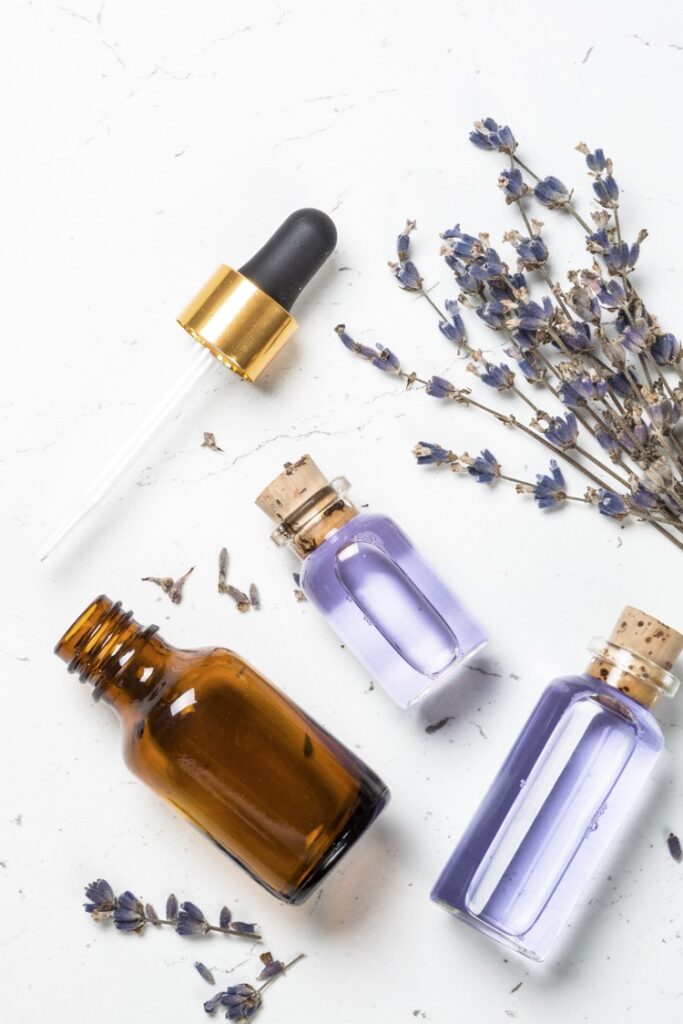Updated: January 5, 2022
We’re going to be diving into the reasons why you need to start using henna, how it works for hair growth, and some of its benefits for your natural hair today!
Henna, also known as Mehndi, is a dye that is derived from the leaves of a plant called Lawsonia inermis. When pure, it is a finely ground green-colored powder. There are three kinds of henna: natural henna, neutral henna, and black henna.
Excuse the stereotype, but have you ever seen an Indian or middle eastern woman walk past you with long thick, luscious natural hair and wonder what their secret was? Well, I’m here to tell you that one of the secrets to their long natural hair is henna and its many benefits!
I know what you’re thinking — “AND GENETICS??!”
Yes, genetics account for a lot when it comes to hair. It affects our hair growth rate (how fast our hair grows out of our scalp each month). It also affects our hair profile (how thick, dense, or porous our hair is), as well as its shape (curly or straight).
However, genetics don’t affect our ability to retain length once it grows. Henna can! So keep reading to find out how!
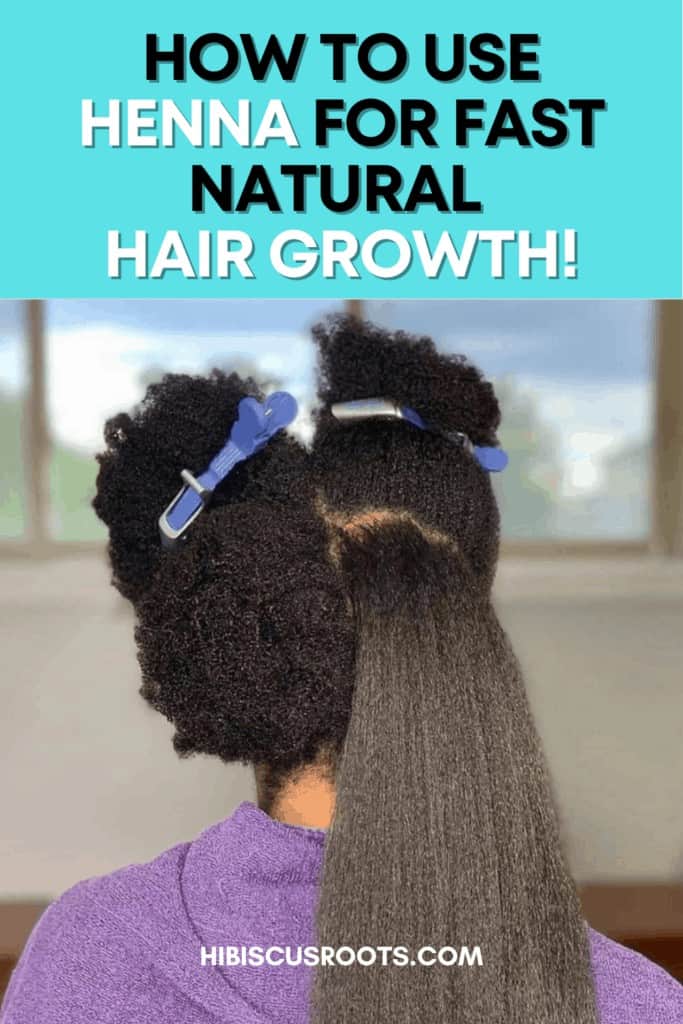
What Kind of Henna is Good for Hair?
- Natural Henna: This kind of henna stains the hair with a deep reddish-brown color which gets darker days after application. It is sometimes referred to as red henna so as not to be confused with the other varieties. This is “real henna,” and it contains lawsone dye.
- Neutral Henna: This kind of henna, on the other hand, doesn’t change the color of the hair. It is not really henna, of the Lawsonia plant. It is rather the powder of a plant known as Cassia obovata.
- Black Henna: This is usually simply referred to as indigo. It is the powder of the partly fermented and dried indigo plant and is used in combination with natural henna to dye hair black. Indigo will not dye skin or hair black on its own. So there is technically no such thing as black henna. Unfortunately, it may also contain tons of unsafe dyes and chemicals (like PPD). These could cause severe reactions on the skin if left on too long.
Does Henna Promote Natural Hair Growth?
Until now, you’ve probably only heard about henna for its dyeing capabilities. You’ve also probably seen or gotten henna body art or tattoos. You’ve may even have heard about the sometimes unsightly brassy color it can leave on certain hair colors.
Guess what? Colouring is just one of the many things henna can do to drastically transform your hair.
Here are a few benefits that should get you curious about trying henna on your natural hair:
1. Thickens natural hair
Treating your kinky hair with henna will fortify it because henna binds to the hair cuticle. It deposits lawsone dye particles into any gaps and crevices on the surface of the hair, filling up such gaps and gradually making hair less porous.
It might be easier to visualize henna forming a new layer over the surface of your hair every time you use it. This way it reinforces and thickens your natural hair strand.
As such, henna may be a great substitute for people with protein sensitive hair.
Read Also: The Complete Low Porosity Hair Care Guide for 4C Naturals!
2. Promotes overall scalp health
Henna is known to have anti-fungal and antimicrobial properties that can fight dandruff, irritation, flakes, and itching caused by psoriasis on the scalp. It also strengthens the skin of the scalp and keeps it in top shape. It can be cooling and soothing to the scalp and it promotes scalp health.
If you didn’t already know this, the most you can do to promote hair growth is to provide an ideal and healthy enough environment on the scalp to support it.
Healthy scalp = healthy follicles = thicker, stronger hair = more resistance to breakage = longer hair!
3. Helps seal the hair cuticle
If you have high porosity hair and have a difficult time keeping moisture locked into your hair strands, then henna is great news!
This is because as henna is deposited in the gaps of your hair cuticle, it makes your natural hair less porous.
However, if your hair is low porosity, this might not be a great hair treatment to use often. Rather, you will find balance with methods and treatments that penetrate the hair cuticle. Henna is not one of them.
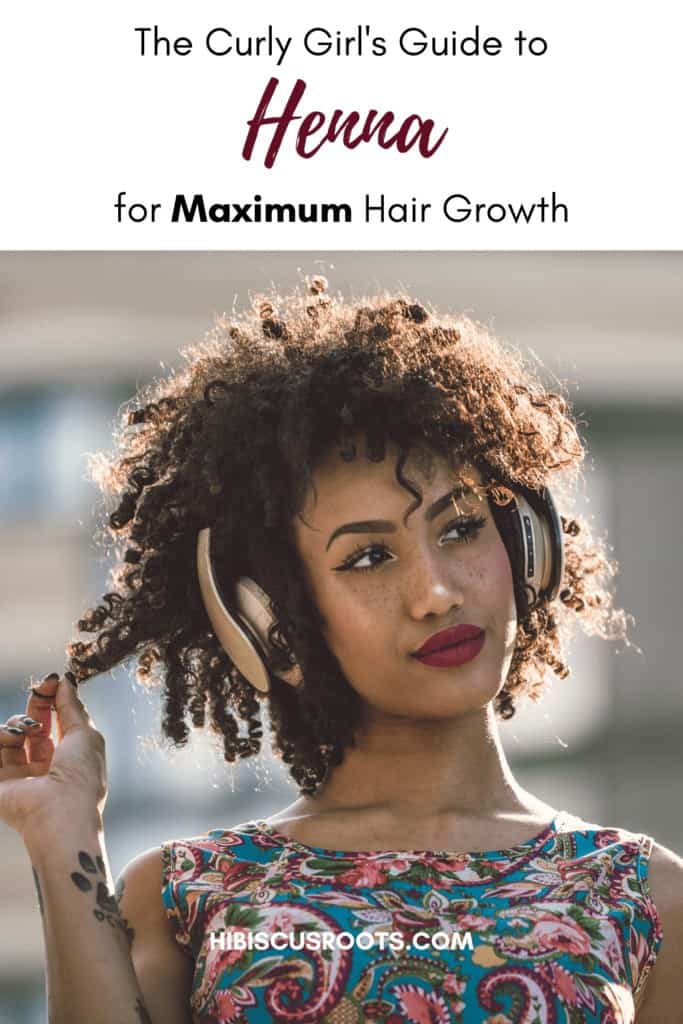
4. Strengthens natural hair strands
We keep talking about the depositing nature of henna. The benefit of this property of henna is that it makes your natural hair stronger and more difficult to break.
If your hair gets difficult to break, it means you can actually retain your length!
5. Promotes moisture retention
Because henna helps seal the hair cuticle, it reduces hair porosity. When the hair is less porous, it becomes easier to retain moisture!
So even though the primary benefit of natural hair is strengthening, the secondary effect is moisture! This makes henna a wonderful herb, when used correctly, to maintain moisture-protein balance!
6. Henna promotes hair growth!
For all the aforementioned reasons, henna promotes hair growth. It does this by keeping the scalp healthy, keeping the hair strand thick and strong, and minimizing porosity and moisture loss!
Related Post: How Chebe Powder works for Maximum 4C Hair Growth
How Often to Do Henna Treatments for Hair Growth
A pure henna treatment is one of the strongest hair treatments in your natural hair care regimen.
You should see it as a strong protein treatment because it can have similar strengthening effects. As a result, henna is not something you want to be using in your hair every week.
A mild henna treatment like a henna gloss can be used as often as every other week. However, a henna mask should only be used once a month or every other month.
I always like to use the spaghetti analogy to explain the concept of moisture-protein balance. If your hair is a single spaghetti stick, then you should try to keep it as close to al dente as possible for maximum health and length retention. If it gets too strong because of too many strengthening/protein treatments, it becomes fragile and easy to snap. Contrarily, if you do too many moisturizing treatments, it becomes too mushy and slides off in your comb and hands.
BALANCE IS KEY!
How to Use Henna for Natural Hair Growth
There are three major ways to do henna treatments on natural hair to encourage growth (aka length retention) – as a henna gloss, a henna hair mask, and a henna oil.
1. Henna Gloss
This is a milder version of a henna treatment. It imparts all the benefits of henna on natural hair, without over-processing it. It also doesn’t impart as much color on the hair because of the shorter processing time involved.
Simply put — by opting for a henna gloss, you can easily do a henna hair treatment without changing your hair color!
It is made by mixing the henna (once its dyes have been released) with oils, and conditioners. As a gloss, the treatment is lighter in consistency and easier to apply to hair strands. The conditioners and oils mixed in also provide added slip and reduce the risk of breakage during application.
Because this is Hibiscus Roots, and we’re all about maximum results, we also like glosses because you can customize the ingredients and oils that go into the recipe depending on your hair goals.
You can add oils and herbs that will work well with henna to provide maximum benefits.
You can use a henna gloss as often as every other week (depending on your hair profile) and how much of a goal “hair strengthening” is for you.
Related Post: 9 Simple Henna Gloss Recipes for Type 4 Hair
2. Henna Hair Mask
This is the treatment that involves the most time and effort. Literally, in your whole Ayurvedic natural hair regimen.
How to Prepare a Henna Masque
Start by mixing the henna powder with green tea, water, lemon juice, apple cider vinegar, (or any mild acid) covering it, and letting it sit at room temperature for at least 8 hours, but no longer than 24 hours.
This process is called dye-release, and we do it to ensure that the henna is at its most potent before you apply it. You can read more about the importance of dye-release in the henna treatment step here.
When the henna is ready, you will notice that the surface is darker than the paste beneath. You may also notice some reddish-orange liquid collecting at the top.
How to Use the Mask
Apply the paste to your hair in small, detangled sections. Ensure you’re wearing gloves and clothes you don’t care to stain because this process is messy! We also recommend doing this on damp, moisturized, or dry hair.
You should never do this on soaking wet 4c hair! The mixture will become runny, drip, stain everything, and not produce the results you want!
Once you have coated your strands and scalp with this treatment, cover it with a plastic cap and leave it in your hair for 2-4 hours. The longer you leave it in, the more dye it will impart to your hair.
Here’s a great video that details the process of preparing and applying your henna treatment as a hair mask:
3. Henna Oil
This is the easiest possible way to incorporate henna into your hair regimen for natural hair growth. Simply infuse a teaspoon of henna into any of your favorite oils and turn it into an anti-fungal, anti-microbial, strengthening, powerhouse.
See our post about the benefits of infusing your own Ayurvedic oils here with instructions on how to do it.
You can also pick an oil from our list of Ayurvedic oils here.
Potential Disadvantages of Henna for Hair
If your hair is pretty dark or jet black, the imparted dye may not be so visible. However, you may notice that your hair has a reddish or brownish tint in sunlight. This will vary by how many times you’ve done the treatment in the past, and how long you let the dye sit in your hair. However, if you have color-treated hair or lighter-colored hair, be prepared for the color of your hair to change a little bit.
You should also know that the effects of henna are compounding. Meaning that the more treatments you do, and the longer you process your hair each time, the more lawsone dye you impart on your hair permanently. Depending on the original color of your hair, this may or may not be a concern.
The dye will structurally bind to your hair shaft and will be permanently attached EVEN AFTER RINSING. This is probably why people feel that their curl pattern becomes looser or changes with consistent henna use. As these particles continually bind to your hair shaft, they can actually weigh your hair down and “elongate” your curls. To avoid this, you can choose not to do your treatments as often.
This is why a common warning with using henna is that you cannot dye your hair after henna treatments. It is literally impossible. This is because the gaps on your hair cuticle which your store-bought hair dye would have filled to change its color will already be permanently occupied by molecules of lawsone dye. Even bleaching your hair would not be able to lift color after a henna treatment. This is a treatment that is truly permanent.
This is also why we don’t recommend doing a full henna hair mask more than a few times a year and at most once a month.
Conclusion
Henna is one of many miracle ingredients you need in a great Ayurvedic hair regimen. However, to see the benefits of henna, you have to use it alongside practices and methods for natural hair care that promote hair growth and health together.
You need balance to see your hair thrive.
Doing one henna treatment a week is not going to make your natural hair grow 1 inch a week. This is because doing 1 henna treatment a week will throw your hair off its natural moisture-protein balance. It will be TOO fortified, and that in itself can lead to breakage.
However, doing a henna treatment relatively often will fortify your hair and keep it from breaking. It will also improve the health of your scalp – leading to ensured hair growth, and length retention. THIS will result in longer hair over time.
We want you to incorporate this treatment into your hair regimen, but stay informed about the potential risks involved.
If color change is a risk you absolutely do not want to take, you can substitute the henna in the treatments mentioned with Neutral Henna or Cassia. Cassia, though it looks and acts like henna does not contain lawsone dye, so there is no risk of staining your hair!
You also do not need to go through the dye-release step of making your masque when using cassia. It is strengthening and beneficial in its own right, just not as powerful as henna is.
Here at Hibiscus Roots, we actually prefer cassia to henna for this reason! There is less risk overall to throw your natural hair too far off balance.
featured image: source
Let us know in the comments if you try any of these treatments and how they work out for you!
